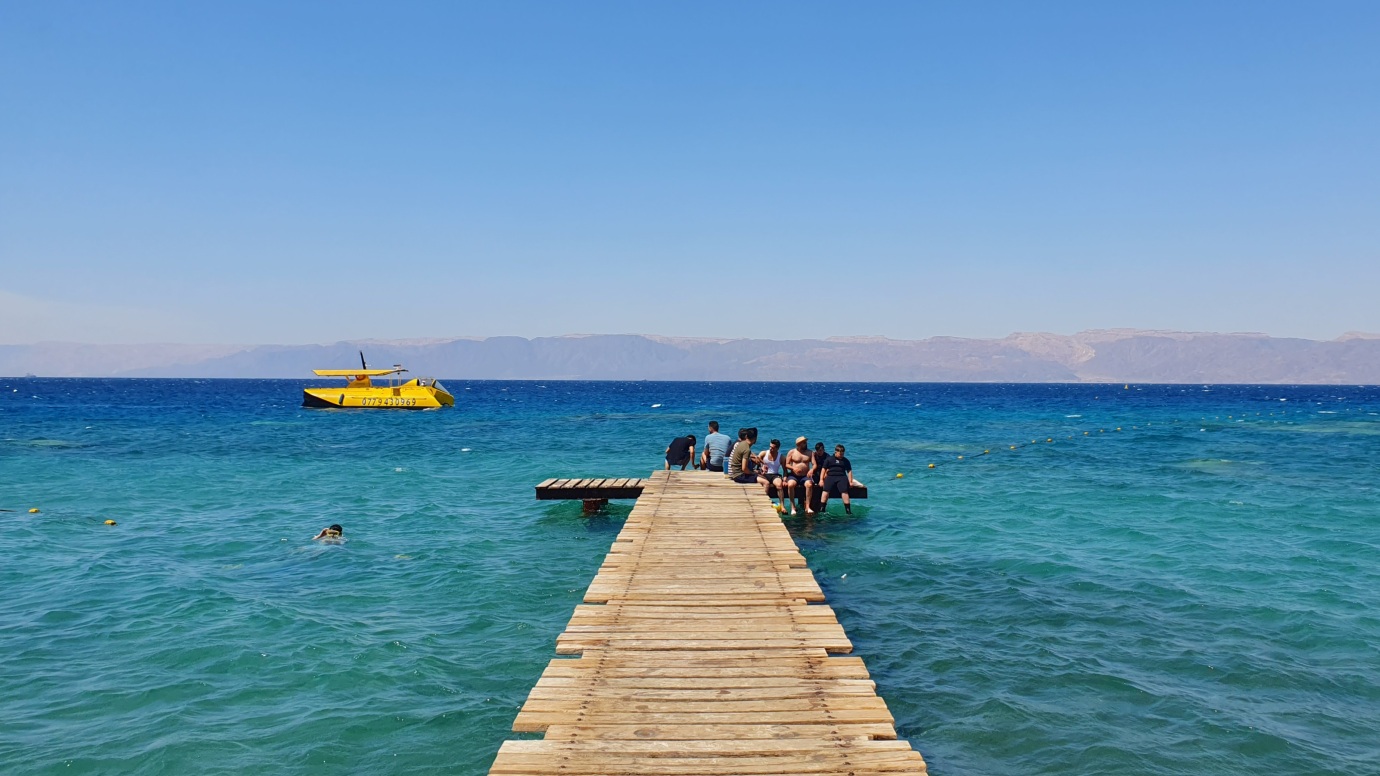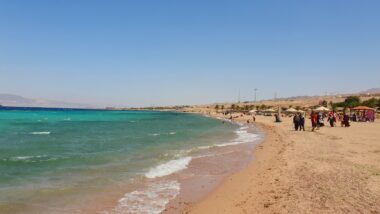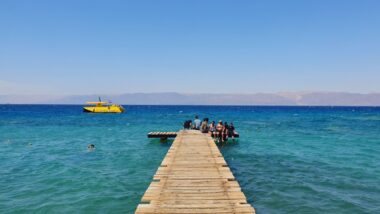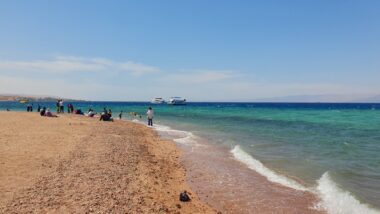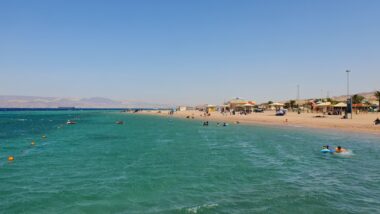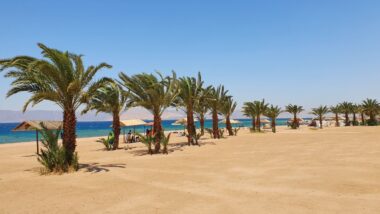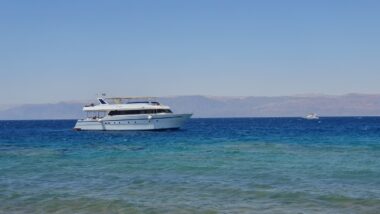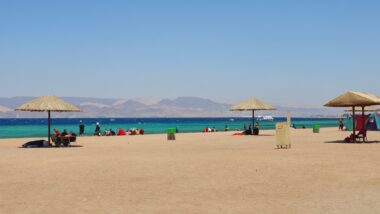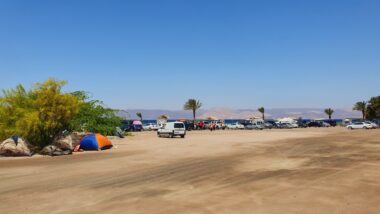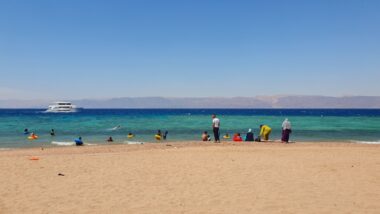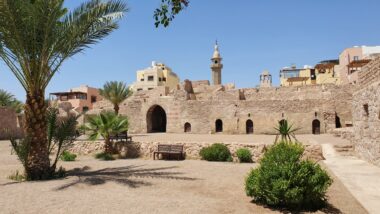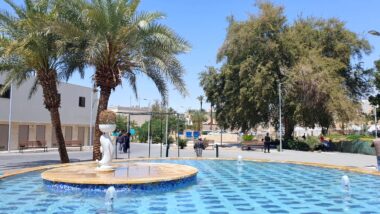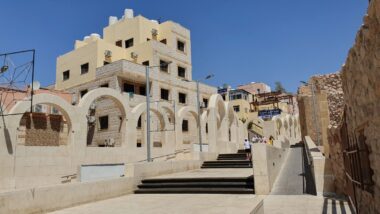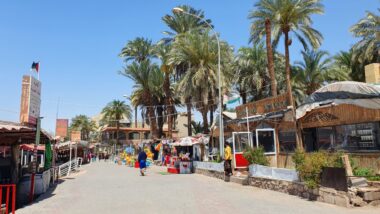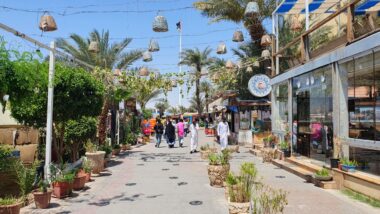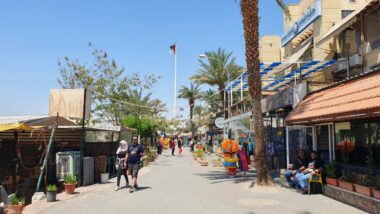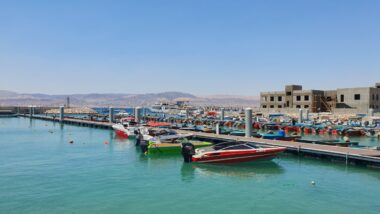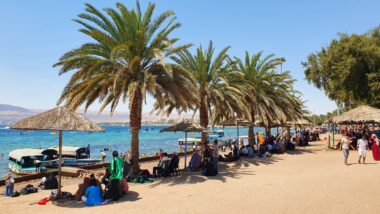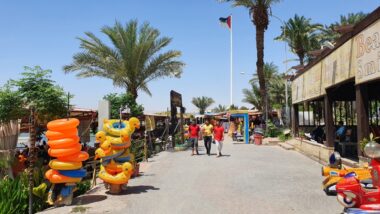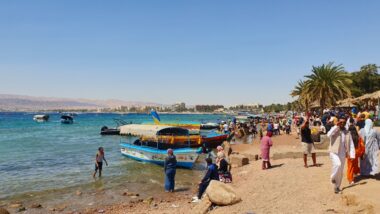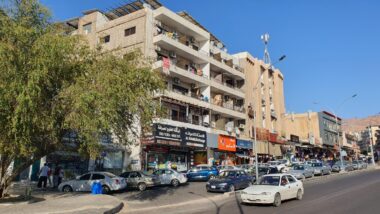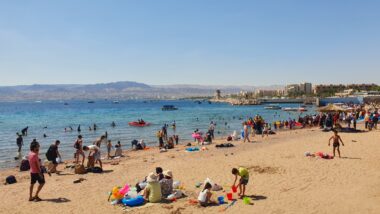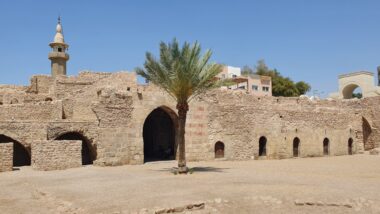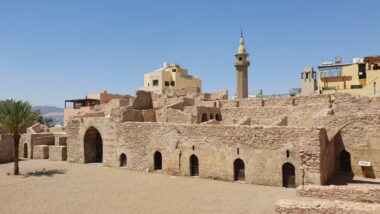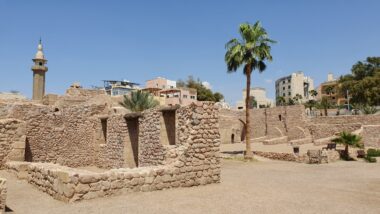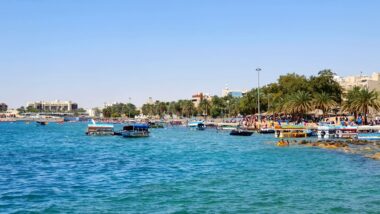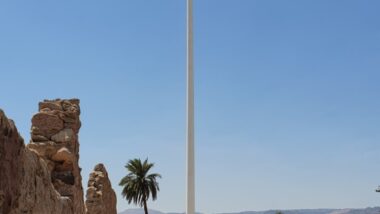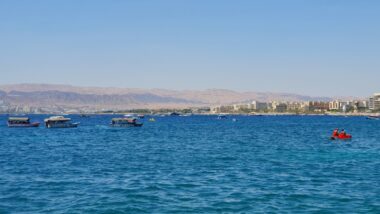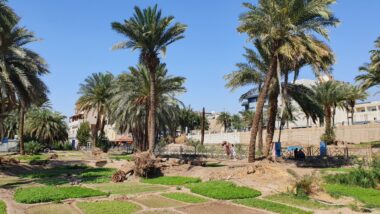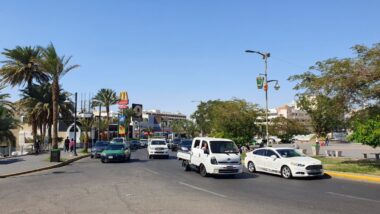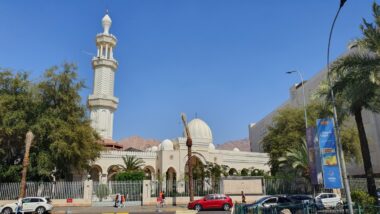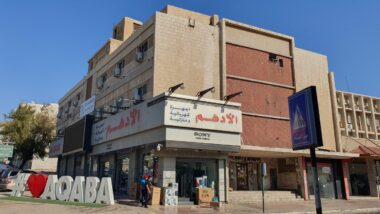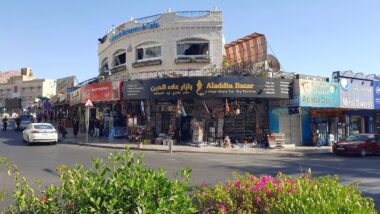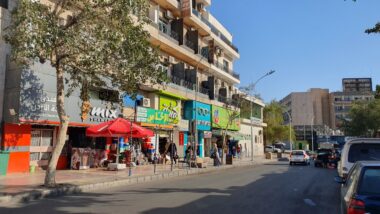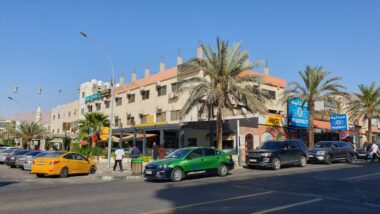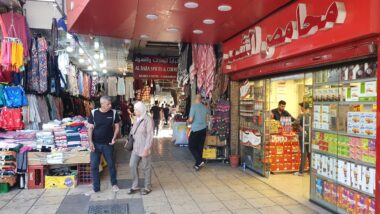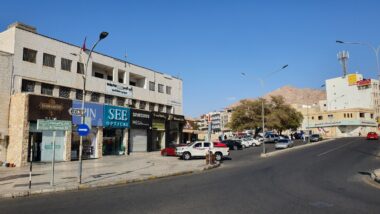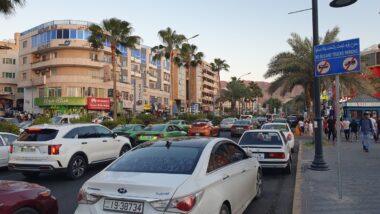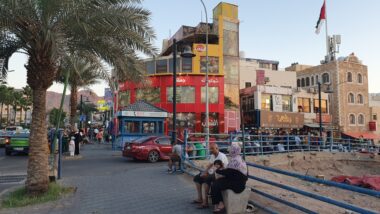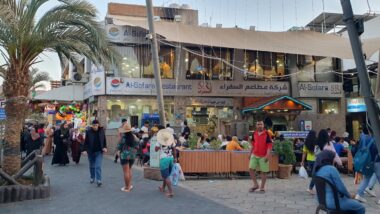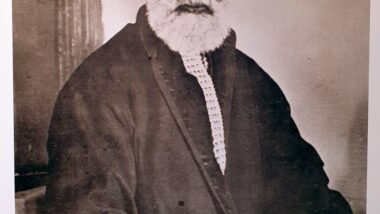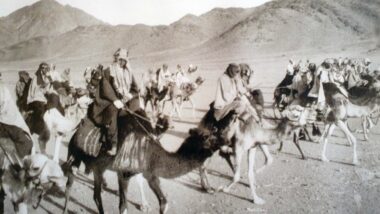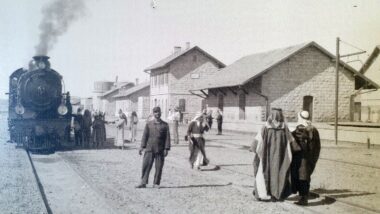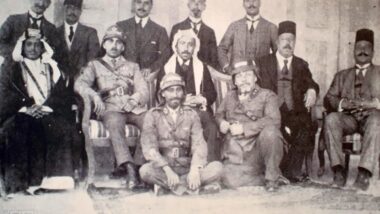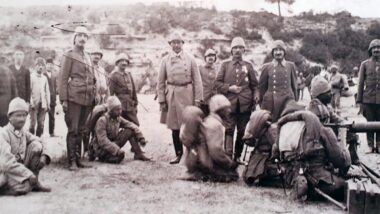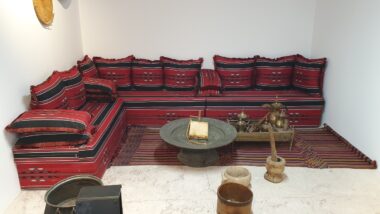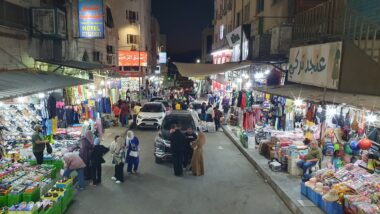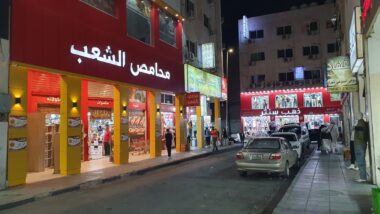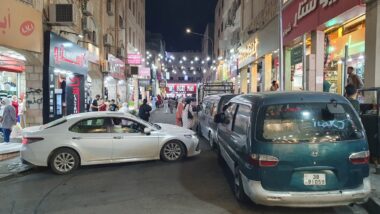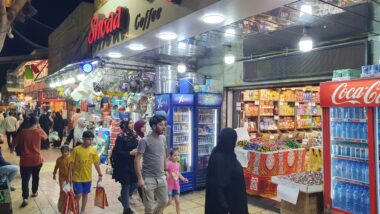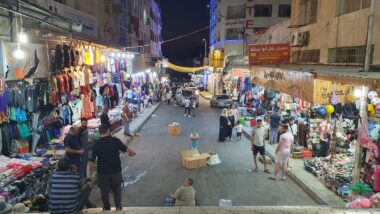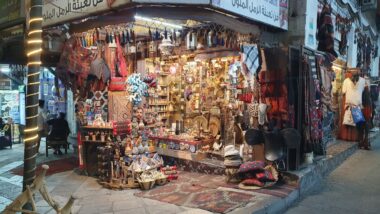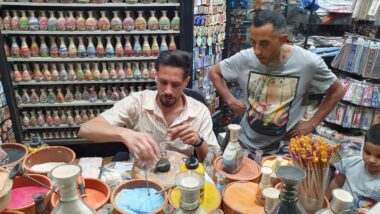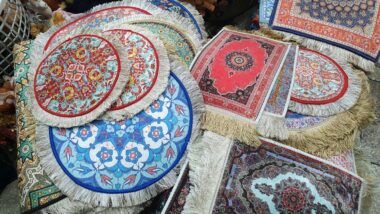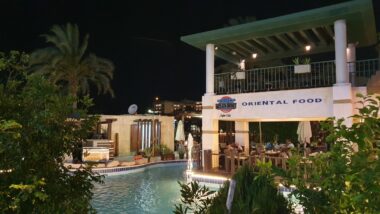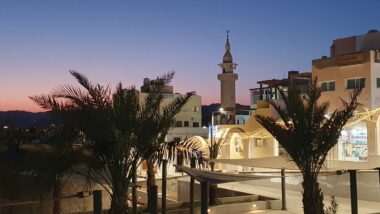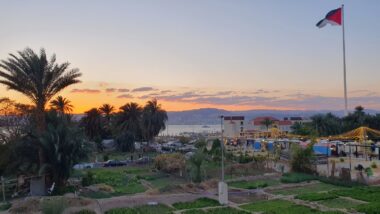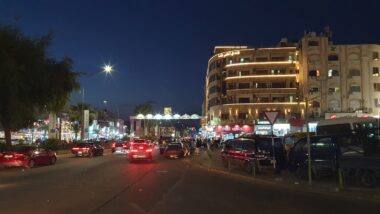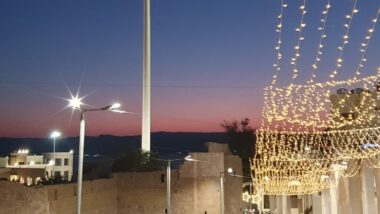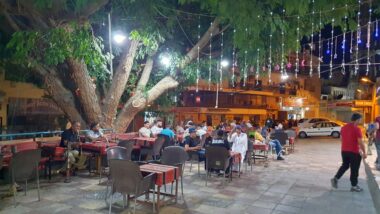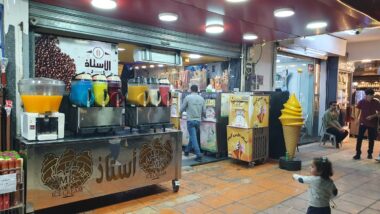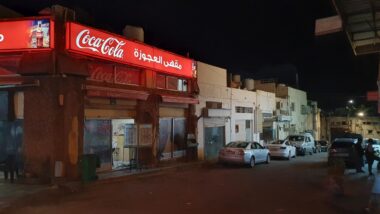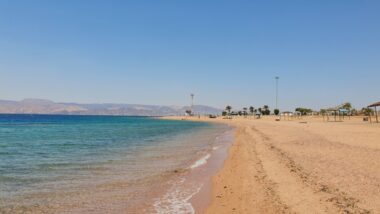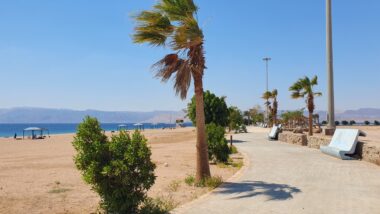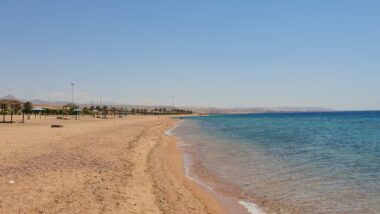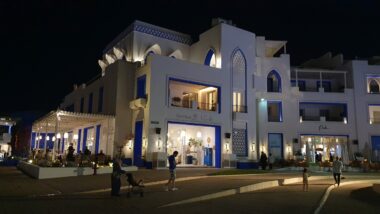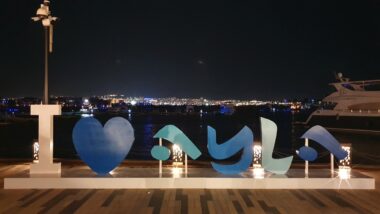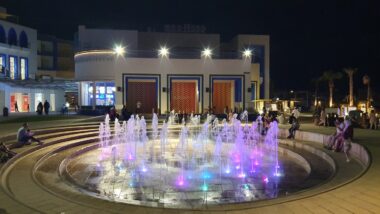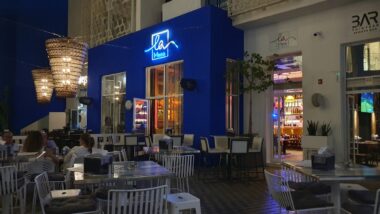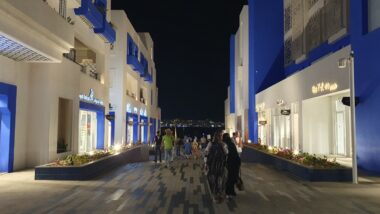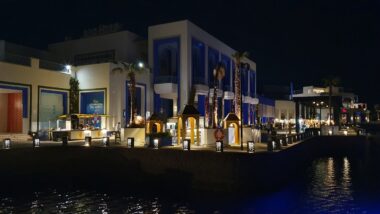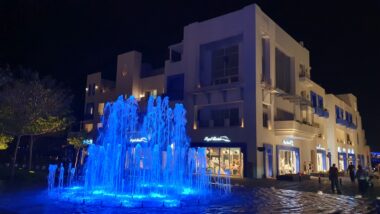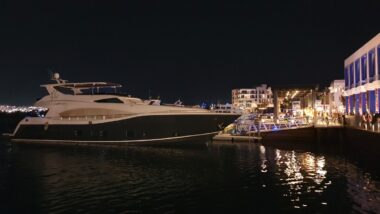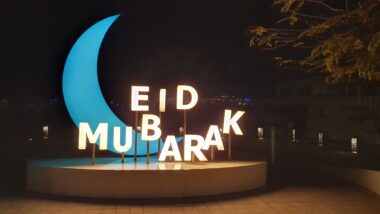Our final destination in Jordan was the only coastal city, Aqaba, ideally set between the majestic Wadi Rum mountains and the Red Sea. It has been settled for millennia because of freshwater springs in the vicinity; King Solomon’s port and foundry of Ezion-Geber lay nearby. With its relaxed, small-town atmosphere, Aqaba was a popular local getaway, but COVID-19 and the ongoing conflict in Israel changed everything. Many of the luxurious resorts and hotels are closed, and most of the beaches remain empty. We tried to find a Ro-Ro connection to ship our truck to Africa, but all sealines canceled their usual routes because of the escalating conflict in Yemen. Also, finding a usable international flight from/to Aqaba is nearly impossible.
In Roman times, Aqaba was garrisoned by a Roman legion under Trajan’s rule (AD 98–117) and was the southern terminus of a trade route leading from Syria. Under Byzantine rule, it became the seat of a bishopric in the early 4th century. Conquered by Muḥammad in 630/631, it became an important way-station for Egyptian Muslims making the pilgrimage to Mecca. The town was taken by the Crusaders (12th century) and finally returned to Muslim rule in 1183. Aqaba declined under Ottoman rule; at the beginning of the 20th century, it was only a tiny village. Its pilgrim traffic had largely disappeared following the opening of the Suez Canal (1869) and the completion of the Hejaz Railway (1908).
A strategic fortified Turkish outpost in World War I, Aqaba was bombarded by the British and French navies and captured by Arab irregulars led by T.E. Lawrence in July 1917. After the war, the status of Aqaba was in dispute; Britain claimed an outlet on the Gulf of Aqaba for its newly created protectorate of Transjordan (technically part of the Palestine mandate), while the Kingdom of Hejaz based a counterclaim to the town and regions to the north on the former political subdivisions of the Ottoman Empire. When King Ibn Saʿūd conquered the Hejaz (1925), the British placed Aqaba and the Maʿān district under Transjordanian authority; this de facto situation continued when Jordan became fully independent (1946). Saudi Arabia had never agreed to these frontiers, which were disputed until 1965. Then, a boundary agreement between the two states was signed, giving Saudi Arabia desert territories in the interior that were formerly part of Jordan; in return, the Saudis officially recognized Aqaba as part of Jordan and gave Jordan an additional frontage on the Gulf of Aqaba of about 16 km.
We spent the first night at South Beach, which was full of locals camping for the weekend during the Eid Holidays. The other day, we parked in Aqaba City and did a short sightseeing tour following this route: Flagpole ➡ Aqaba Fort ➡ Sharif Al Hussein Bin Ali Mosque ➡ City Beach ➡ Ruins of Ayla (closed) ➡ Souq. On the last day, we chose Yamaniya Beach for our overnight stay. There are several acceptable restaurants. We tried Seaview Restaurant at the public beach (Pizza Quattro Formaggi – 4,65 JOD, Lemon-Mint Juice – 2 JOD, Water – 0,5 l / 1 JOD). Nearby is also a good kebab Alia restaurant (Lentil soup – 1,5 JOD, Chicken Shawarma – 2,5 JOD, Chicken strips – 4,8 JOD, Banana shake – 2,5 JOD, Water – 0,5l / 0,5 JOD). But we loved to go for our dinners to Cloud 7 at Ayla Oasis (taxi from center 2 JOD). And we should not forget our favorite pub, Rovers Return, located just in the center (Amstel beer – 4,75 JOD / pint, Petra beer – 4,25 JOD / pint, Mozzarella sticks – 6,5 JOD, Fried mushrooms – 5,75 JOD, Buffalo chicken tenders – 7 JOD).
Because the conflict between Israel and Iran had escalated, we took a short break and booked a reliable Jett bus to Amman (10 JOD) to catch our Wizz Air flight. Unfortunately, just a few hours before departure, once we were on the bus, we got an email that our flight had been canceled. We bought another ticket for the only available and very expensive Fly Dubai flight, which in the end turned into a disaster because we got stuck for four horrible nights at Dubai Airport.
South Coast
Aqaba – town and beach
Yamaniya Beach
Ayla Oasis
Parking location – Yamaniya Beach: 29.445445N 34.973066E (🚻)
Parking location – South Beach: 29.419030N 34.973979E (🚻)
Parking location – Aqaba: 29.515971N 35.003064E (can’t recommend for safety reasons)


